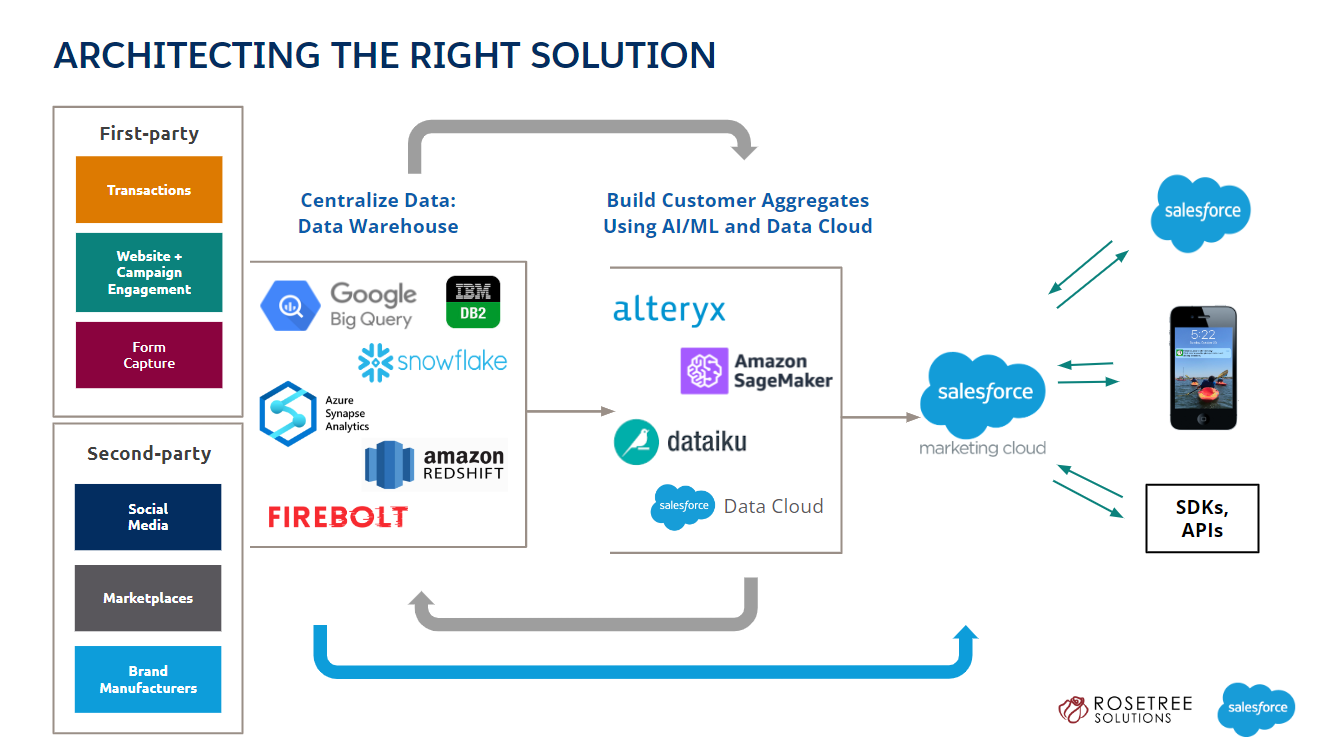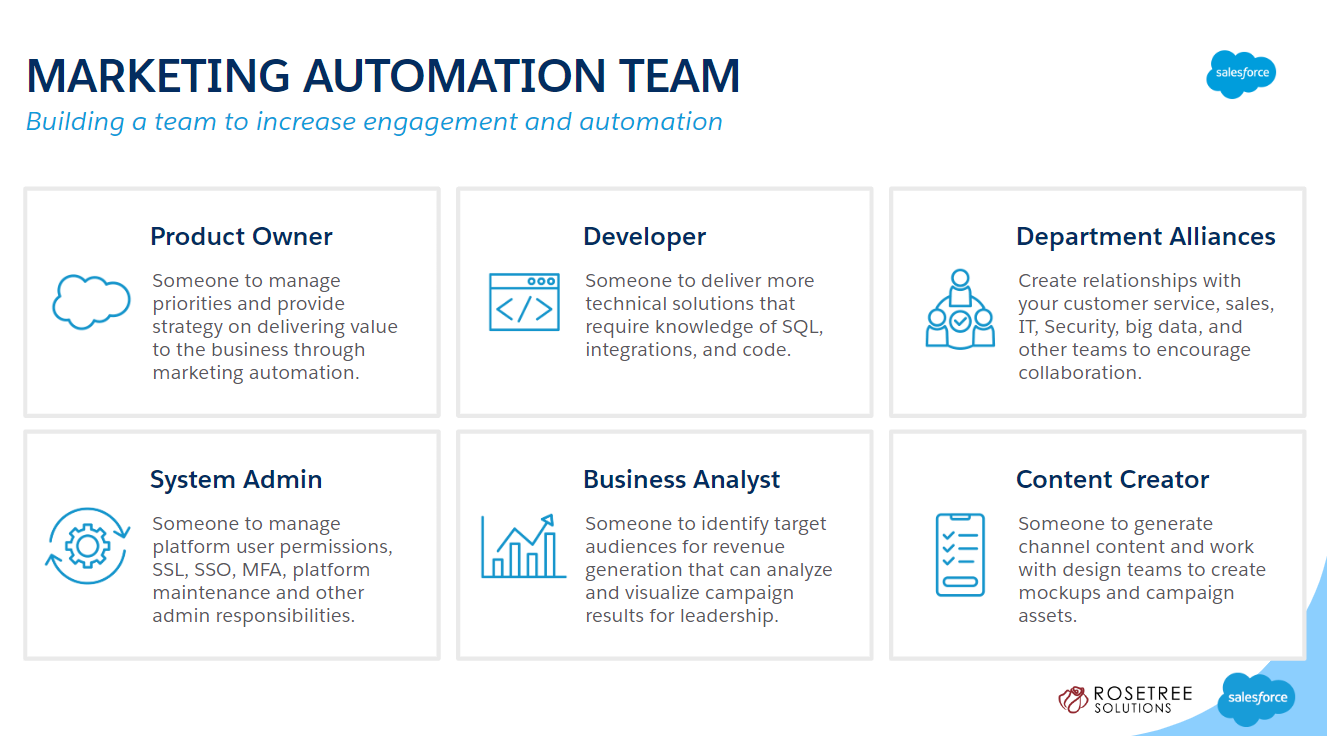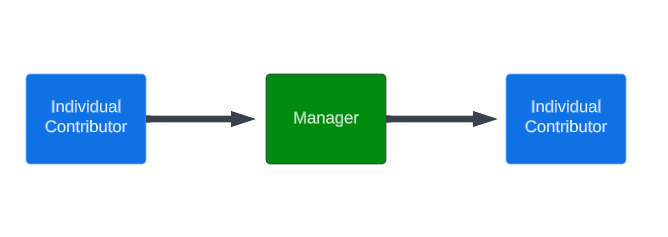To Lead or Not To Lead
Natasha Martin
Published on 10/15/2023
Introduction:
Many of us came into the Salesforce Marketing Cloud ecosystem the same way others came into the general Salesforce space, by chance.
My career began as a web developer in 2010 when many companies were making the transition from traditional print marketing to digital engagement (primarily through email and web). My manager at the time attended Dreamforce and purchased Salesforce Marketing Cloud. The onboarding process required collaboration with other teams within the company to add DNS configurations, internal email routing, SSL certificate generation, and other topics that were outside of the skillsets of a normal marketing team. Since I was already managing our existing ESPs and developing and deploying websites for the team, my skills were best aligned with the onboarding process and configuration and implementation needs of the platform beyond onboarding.
Emergence of the Technical Marketer:
Today’s MarTech landscape requires more than just an ESP and a handful of customer data points. Companies need the ability to respond to customers in real-time, at the moment it matters most, and with relevant content. Mix in the latest innovations in AI and it can seem like an impossible task for small and often under-funded marketing teams.
Modern marketing requires a deeply integrated marketing stack that not only ties customer data to your marketing automation platform of choice but surfaces it in a way that is meaningful for automated segmentation, offer targeting, proactive customer service and support.
Here’s an example of what a Modern Marketing Architecture might look like today:

With new products like Data Cloud and the latest Salesforce Einstein innovations, marketing teams will be able to take on more initiatives. Once they work with internal IT and Big Data teams to integrate the right data and lay the foundation for success by establishing their Customer 360 data models for segmentation and targeting, they’ll be able to pivot quickly as the needs of their organizations and the AI-driven marketing landscape evolves.
Transition to Management:
Salesforce Marketing Cloud has historically had a steeper learning curve, but it also creates opportunities for enterprise marketing teams to build just about anything they can imagine. The flexibility of the platform and ability to configure it, integrate with it, and develop in it has led to a lot of highly sophisticated marketing solutions.
Those who advanced quickly in their Marketing Cloud careers understood the platform’s potential. They developed solutions that had a noticeable impact on revenue streams and influenced customer behaviors for large brands. Their roles often existed on the business side, not within IT, but they had a direct connection with IT teams (network/infrastructure, security, integration, and mobile app teams to name a few). Highly technical marketers collaborated with these teams regularly, often raising the question of where this marketing role should live within the organization.
As the value of Salesforce Marketing Cloud gains visibility within enterprise companies, it begins to attract attention from other departments who want to utilize marketing automation to support their initiatives.
What typically begins as a marketing automation team of one or two people, grows over time, and requires someone to take the lead and help scale the use of the platform across the enterprise. In addition, they must also manage daily marketing operations to maintain, monitor, and troubleshoot live automations and integrations.
I’ve had the privilege of working with some amazing people in my career and have worked as both an individual contributor and manager. Leading a team is a big responsibility, but having the opportunity to teach and help others grow their career is really an honor. It’s an interesting position to be in when you train others up and encourage their growth. You must balance the feelings of pride from watching them reach their potential with the realization that their success means you must start over again by hiring, training, and leading new team member(s) on their career path. I still love hearing from many of them and having an opportunity to catch up on their latest achievements (personal and professional) and provide guidance when they seek it.
Building a Team:
As we all know, technology changes at a rapid pace. It’s important to learn how to balance the ability to lead and manage your team while deciding how much of an individual contributor role you can play (if any).
Knowing what roles your team will need to support enterprise-scale marketing automations is also key. There can (and often will) be team members that share multiple roles, but as the team grows this can be a guideline for how individual roles might become more focused to grow with the organization:

Management and Servant Leadership:
When transitioning from an individual contributor to a supervisor or management role, are some new skills you will need to learn and implement. These are a few things I’ve learned over time that will hopefully help others seeking a management role:
- Don’t be afraid to surround yourself with people who either know more than you about a specific topic or can challenge you in ways you might not challenge yourself.
- Learn to delegate! This was so hard to do early in my management career. But once I did, it was amazing how much we could accomplish as a team.
- Be a leader not a boss. To be an effective leader, you must have a genuine desire to grow others and champion their success.
- Actively seek opportunities that allow your team to grow. This could be through experiences like on-site retail visits to immerse them in the experience of your customers or it might be an opportunity to lead a project that gives them more exposure to different teams across an organization.
- Allow your team to present their own work (weekly standups, monthly product demos, quarterly presentations).
- Recognize wins and learn from failures as a team (be willing to accept responsibility as their leader when things go wrong, but align that with retrospectives and constructive feedback given privately).
- Reserve 1-1 time for team members each week to clear obstacles. This also gives them a space to communicate other challenges and accomplishments.
- Allow the team to work through problems without running to their rescue. They can’t learn, if they aren’t allowed to work through a journey decision flow, troubleshoot errors, weigh pros and cons of implementing campaigns in different ways, or anticipate blockers, etc.
There are also some things that might be unexpected. A few things you may want to consider about the transition from an individual contributor to a management role:
- It’s difficult to lead a team when you don’t know how to steer the ship. Experience comes from exposure to a variety of scenarios that may seem unpredictable in the moment. Over time, those are the experiences that form your ability to think ahead and plan for points of friction, scalability considerations, etc. that will help lead your team in the right direction.
- For many, imposter syndrome creeps back in at a swift pace when you’re no longer “hands on” and actively developing on the platform. Plan for this in advance, so you know how to address it head on if it happens.
- Keep an eye on what’s trending. This requires even more attention with all the rapid changes with AI.
- Multiple meetings, reports, and other activities will compete for your time in management. You will need to pro-actively schedule time on your calendar to allow for that pulse-check and research on the latest innovations that could impact your team and organization.
Return to Individual Contributor:
Because managing teams leaves less time for implementation, many leaders find themselves wondering if they’re on the right path. This is a trend I’ve seen a lot of technical marketers and developers choosing over the last couple years. I have also seen many alternate from an IC to leadership, back to IC and then return to leadership again with a renewed appreciation and deeper understanding of well architected solutions.

While my career change was primarily motivated by the needs of my family, there was also a desire to return to a role where I could avoid losing the skills I had worked so long to build. This is a concern for many who lead technical teams because of the rapidly changing landscape and the fear of becoming irrelevant.
Many companies don’t have a clear path for developers and other technical roles to advance beyond a senior role, so management is the only path forward. Solution and Technical Architecture roles are a natural progression for these roles and are common in the consultancy and implementation partner space but are not seen as frequently in enterprise organizations.
While the best career choices are unique to the individual and circumstances, it’s important to weigh the pros and cons to determine the best career path for you.
Here are a few additional resources for those considering management or transitioning back to an individual contributor role from a leadership position:
- A Guide for Transitioning from Manager to Individual Contributor
- What You Give Up When Moving Into Engineering Management
- You Can Stop Being a Manager Without Sinking Your Career
- Why I Left Engineering Management and Moved Back to Individual Contributor
About Natasha:
Title: Salesforce Marketing Cloud Architect
Company: Rosetree Solutions (https://rosetreesolutions.com/)
Bio: Natasha has managed and trained teams on Marketing Cloud and led the technical implementation of numerous customer-facing campaigns that span loyalty, sales, retail, mobile app, and more. She began working as a web developer in 2011 with a dual client/project management role. In 2013, she transitioned to a technical marketer role that included web development, marketing automation, integration, and project management. She has architected automated campaign solutions that deliver messaging to customers in real-time utilizing MuleSoft APIs, point-of-sale integrations, Salesforce Marketing Cloud, Salesforce Data Cloud, and more.